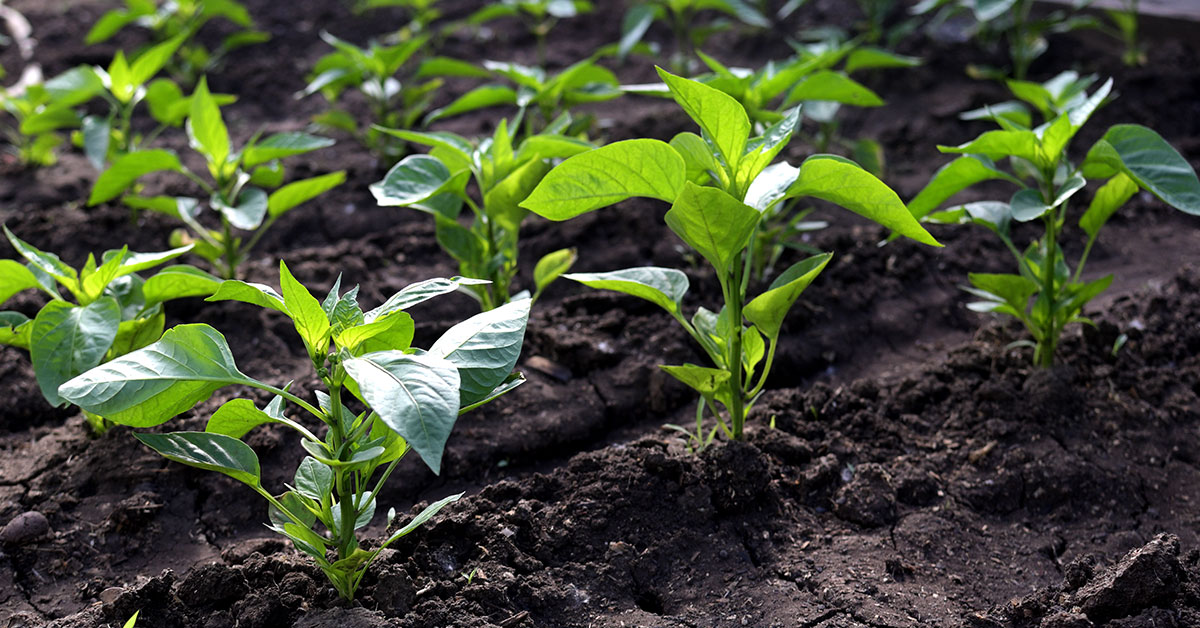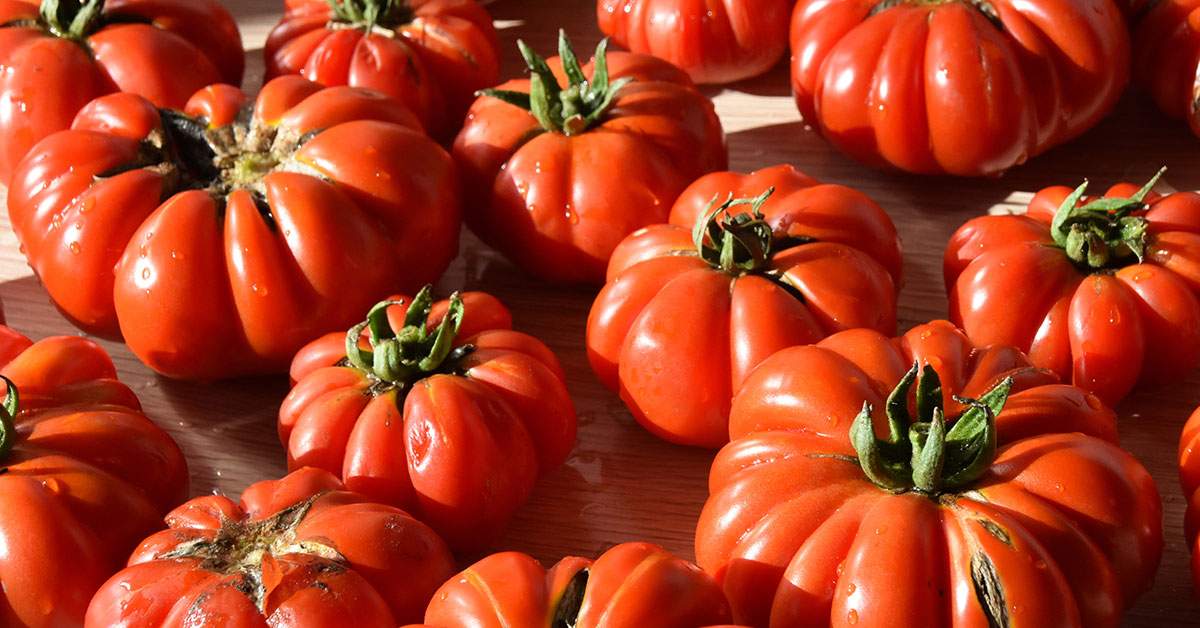The Cherry Pepper is a delicious and popular vegetable that is enjoyed by many people around the world. These small, round peppers are known for their sweet and slightly spicy flavor, which makes them a great addition to a variety of dishes.
In addition to their delicious taste, cherry peppers are also very easy to grow, making them a great choice for home gardeners who want to add some spice to their vegetable garden. In this blog post, we will explore everything you need to know about growing and caring for cherry pepper plants.
What is a cherry pepper?
Cherry pepper plant, also known as pimento pepper, is a type of chili pepper that is characterized by its small size and sweet flavor. It is a member of the Capsicum annuum species, which also includes other popular chili peppers such as jalapeños and bell peppers.
The cherry pepper plant typically grows to about two feet in height and produces small, round fruits that are about an inch in diameter. These fruits start off green and turn bright red as they ripen. They have a thin skin and a juicy, meaty flesh that is perfect for stuffing or pickling.
Cherry pepper plants are easy to grow and can be cultivated in most climates. They prefer warm temperatures and well-draining soil, and can be grown in containers or in the ground. With proper care, a single cherry pepper plant can produce dozens of fruits throughout the growing season.
In addition to their culinary uses, cherry pepper plants are also popular ornamental plants. Their bright, colorful fruits and attractive foliage make them a great addition to any garden or patio. They are also a favorite among home gardeners, who appreciate their ease of cultivation and abundant harvests.
What do cherry peppers taste like?
Cherry pepper plants are a popular choice for those who love a little heat in their food. These plants produce small, round peppers that are typically red or green in color. The taste of cherry peppers can vary depending on their level of ripeness, but they are generally sweet with a mild to moderate level of spiciness.
When the peppers are still green, they have a slightly bitter taste, but as they ripen and turn red, they become sweeter. The heat level of cherry peppers is similar to jalapeños, but they have a fruitier flavor that makes them perfect for use in dishes like salsas, pickled vegetables, and salads.
One of the great things about cherry peppers is that they can be used in a variety of cuisines. They are commonly used in Italian, Spanish, and Mexican dishes, but they can also be found in Asian and Middle Eastern cuisine.
In addition to their delicious flavor, cherry peppers are also packed with nutrients. They are a good source of vitamins A and C, as well as potassium, magnesium, and iron. So not only do they add flavor to your dishes, but they also offer a range of health benefits.
Overall, cherry pepper plants are a great addition to any garden or kitchen. Their sweet and spicy flavor, along with their versatility, make them a favorite among home cooks and professional chefs alike.
How to start cherry pepper seeds
Cherry peppers are a delicious and versatile addition to any garden or kitchen. These small, flavorful peppers come in a range of colors and can be used fresh or pickled. Starting cherry pepper plants from seed is a fun and rewarding project for gardeners of all levels. In this section, we will discuss how to start cherry pepper plants from seed.
- Choose your seeds: The first step in starting a cherry pepper plant from seed is to choose the right seeds. Look for high-quality seeds from a reputable supplier. You can choose from a variety of cherry pepper cultivars, including sweet cherry peppers, hot cherry peppers, and even ornamental cherry peppers.
- Prepare your soil: Cherry peppers prefer well-draining soil that is rich in organic matter. Start by filling small pots or seed trays with a high-quality seed-starting mix. Moisten the soil with water and allow it to drain before planting your seeds.
- Plant your seeds: Cherry pepper seeds are small and should be planted shallowly. Make a small indentation in the soil with your finger and place one seed in each pot or cell. Cover the seeds with a thin layer of soil and lightly water them.
- Provide proper lighting: Cherry pepper seeds require bright light to germinate and grow. Place your pots or seed trays in a sunny location or under grow lights. Keep the soil moist but not waterlogged.
- Transplant your seedlings: Once your cherry pepper seedlings have developed their first true leaves, they are ready to be transplanted into larger pots or directly into the garden. Harden off your seedlings by gradually exposing them to outdoor conditions before planting them in their permanent location.
By following these simple steps, you can start cherry pepper plants from seed and enjoy a bountiful harvest of fresh, delicious peppers.
How to grow cherry peppers
Cherry pepper plants are a great addition to any garden. They produce small, brightly colored peppers that are perfect for adding a pop of flavor and color to a variety of dishes. Here are some tips on how to grow cherry pepper plants:
- Choose the Right Location: Cherry pepper plants require full sun to grow and produce fruit. Make sure you choose a location that gets at least 6 hours of direct sunlight per day.
- Prepare the Soil: Cherry pepper plants prefer well-draining soil that is rich in organic matter. If your soil is heavy or clay-like, amend it by adding compost or aged manure.
- Plant the Seeds: Cherry pepper seeds can be started indoors 6-8 weeks before the last frost date or directly sown in the garden after the danger of frost has passed. Plant the seeds ¼ inch deep and keep the soil moist until germination.
- Water Regularly: Cherry pepper plants require consistent moisture to produce healthy fruit. Water the plants deeply once a week, or more often if the weather is particularly hot or dry.
- Fertilize: Cherry pepper plants benefit from regular fertilization. Apply a balanced fertilizer every 4-6 weeks during the growing season to promote healthy growth and fruit production.
- Harvest the Peppers: Cherry peppers are ready to harvest when they are firm, fully colored, and about the size of a cherry. Use a pair of scissors or pruning shears to cut the peppers from the plant. Be sure to wear gloves, as some varieties can be spicy!
By following these simple steps, you can enjoy a bountiful harvest of cherry peppers all season long. Happy growing!
When to harvest cherry peppers
Cherry pepper plants are a popular choice for gardeners who want to grow hot, flavorful peppers in their own backyard. These plants produce small, cherry-sized peppers that are great for adding heat and flavor to a variety of dishes. However, knowing when and how to harvest cherry pepper plants can be a bit tricky. In this section, we’ll go over everything you need to know to harvest your cherry pepper plants successfully.
The timing of your cherry pepper harvest will depend on what you plan to do with the peppers. If you want to use them fresh, you can harvest them when they’re fully ripe and the skin is shiny and firm. If you plan to dry the peppers or use them for pickling, it’s best to wait until they’re fully mature and have turned red.
It’s important to note that cherry pepper plants will continue to produce peppers throughout the growing season, so you can harvest them as they ripen or wait until you have a large batch ready to harvest all at once.
Harvesting cherry peppers is a simple process, but you’ll want to take care not to damage the plant or the peppers themselves. Here’s how to do it:
- Wear gloves to protect your hands from the hot peppers.
- Use a pair of sharp scissors or garden shears to cut the peppers from the plant. Cut the stem about 1/4 inch above the pepper.
- If you’re harvesting a large batch of peppers, use a basket or bucket to collect them. Be careful not to pile them too high, as this can damage the peppers on the bottom.
- Once you’ve harvested all the peppers you want, store them in a cool, dry place until you’re ready to use them.
In conclusion, harvesting cherry pepper plants is a simple process that can be done throughout the growing season. Pay attention to the color and texture of the peppers to determine when they’re ready to harvest, and take care not to damage the plant or the peppers themselves during the harvest process. With these tips, you’ll be able to enjoy fresh, flavorful cherry peppers all season long.













